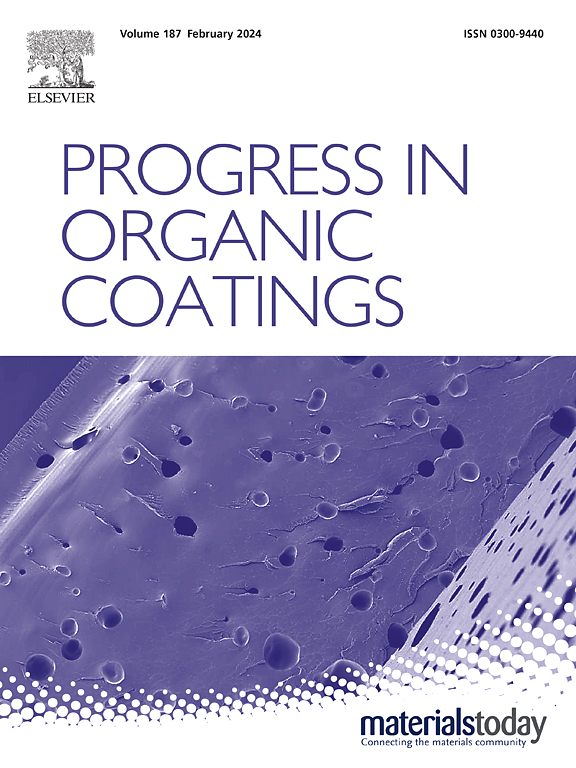动态氨基甲酸硼键交联聚脲弹性体增强抗冲击性能
IF 6.5
2区 材料科学
Q1 CHEMISTRY, APPLIED
引用次数: 0
摘要
聚脲具有显著的力学性能、优异的韧性、快速固化等优点,广泛应用于基础设施防护。然而,开发具有快速冲击响应的高强度聚脲仍然具有挑战性。在这里,通过二异氰酸酯和苯胺端聚醚的混合物与硼酸交联,将动态硼-氨基甲酸酯键与聚脲弹性体(BxPU)结合在一起,以提高机械强度和韧性。聚脲弹性体(B3PU)由于可逆氨基甲酸硼键和氢键的协同作用,具有优异的力学性能,其极限强度为53.8 MPa,拉伸应变为738.8%,韧性为240.9±26.4 MJ m−3。此外,实验和仿真结果表明,BxPU弹性体具有快速响应性,优异的抗冲击性和防护性能。总的来说,这项研究强调了一种开发具有增强抗冲击性的高强度聚脲弹性体的简便方法,为防爆和建筑寿命提供了新的选择。本文章由计算机程序翻译,如有差异,请以英文原文为准。
Dynamic boron-carbamate bonds cross-link polyurea elastomers with enhanced impact-resistant properties
Polyurea is widely used in infrastructure protection because of its significant mechanical properties, excellent toughness, and rapid curing performance. However, developing a high-strength polyurea with a rapid impact response remains challenging. Here, dynamic boron-carbamate bonds are integrated with polyurea elastomers (BxPU) by cross-linking a mixture of diisocyanate and aniline-terminated polyether with boric acid to achieve enhanced mechanical strength and toughness. Polyurea elastomer (B3PU) exhibits superior mechanical performance, attributed to the synergistic effect of reversible boron-carbamate bonds and hydrogen bonds, with an ultimate strength of 53.8 MPa, a tensile strain of 738.8 %, and a toughness of 240.9 ± 26.4 MJ m−3. Additionally, the experimental and simulation results demonstrate that the BxPU elastomers exhibit fast responsiveness, excellent impact resistance, and protective performance. Collectively, this study highlights a facile method for developing high-strength polyurea elastomers with enhanced impact resistance, providing a new choice for explosion protection and building longevity.
求助全文
通过发布文献求助,成功后即可免费获取论文全文。
去求助
来源期刊

Progress in Organic Coatings
工程技术-材料科学:膜
CiteScore
11.40
自引率
15.20%
发文量
577
审稿时长
48 days
期刊介绍:
The aim of this international journal is to analyse and publicise the progress and current state of knowledge in the field of organic coatings and related materials. The Editors and the Editorial Board members will solicit both review and research papers from academic and industrial scientists who are actively engaged in research and development or, in the case of review papers, have extensive experience in the subject to be reviewed. Unsolicited manuscripts will be accepted if they meet the journal''s requirements. The journal publishes papers dealing with such subjects as:
• Chemical, physical and technological properties of organic coatings and related materials
• Problems and methods of preparation, manufacture and application of these materials
• Performance, testing and analysis.
 求助内容:
求助内容: 应助结果提醒方式:
应助结果提醒方式:


